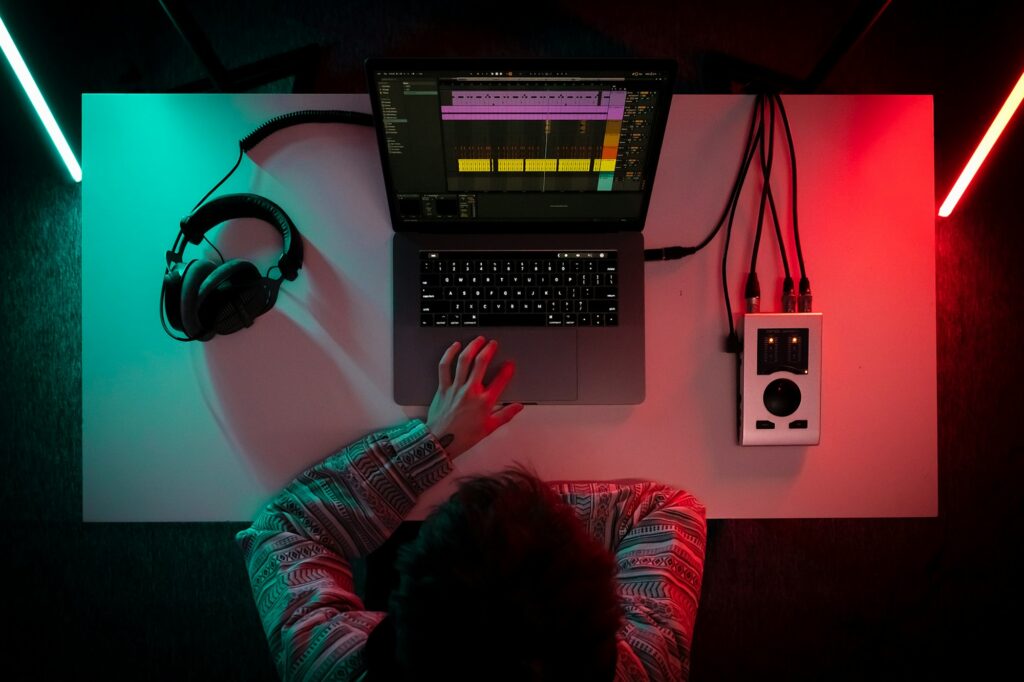Music Technology
Orchestral music is cinematic, emotional, and powerful — and now, accessible. Learn how to compose your first orchestral track from your laptop with the right tools, techniques, and a few beginner-friendly tips that truly work.

There’s something magical about orchestral music. One moment, it’s soft and delicate. The next? A wave of strings and brass crashes in like a storm. Whether it’s a film score or a game soundtrack, orchestral music knows how to hit us right in the chest.
For beginners, stepping into this world can feel overwhelming. So many instruments. So many rules. And what’s a virtual orchestra, anyway? The good news? You don’t need a degree or a concert hall to get started. With the right tools and a few smart techniques, you can start composing rich, cinematic music right from your laptop.
And here’s a tip that saves beginners tons of trial and error: enrolling in one of the many well-structured courses in music composition. It’s a must-have starting point. These programs can walk you through everything — from harmony basics to full orchestral arrangements.
Ready to get started? Let’s walk through the essentials.
Why Orchestral Music Still Gives Us Goosebumps
Orchestral music triggers emotion like nothing else. Think of movie scenes that made you cry or gave you chills. Chances are, a swelling string section had something to do with it.
That’s because orchestral arrangements have a range in tone, emotion, and dynamic power. They can go from a whisper to a roar in seconds. And when done well, they don’t just accompany a story. They become the story.
That’s why learning to produce orchestral music is more than just fun. It’s powerful.
The Essential Ingredients of an Orchestra
Strings, brass, woodwinds, percussion — who does what?
Each section has its own job:
- Strings (violins, violas, cellos, basses): These are the emotional core. Warm, rich in, and versatile.
- Brass (trumpets, trombones, horns, tubas): Power and punch. Perfect for big heroic moments.
- Woodwinds (flutes, clarinets, oboes, bassoons): Great for color, charm, and storytelling.
- Percussion (timpani, snare, cymbals, etc.): Adds drama and drive. Think tension builders and climaxes.
Understanding their roles helps you decide what to use — and when.
Software Setup: What You Actually Need to Get Started
Here’s what you’ll need to begin:
- DAW (Digital Audio Workstation) – Examples include Logic Pro, Cubase, and Reaper. Even free options like Cakewalk can work.
- Virtual instrument libraries – These are what make your computer sound like a real orchestra. Start with free options like Spitfire Labs or try affordable bundles from VSL or EastWest.
- MIDI keyboard – Helps you play ideas naturally, but it is not mandatory at first.
Avoid buying everything at once. Pick one DAW. One starter library. Learn it well. Upgrade later.
How to Create That Big Cinematic Sound
Big sound doesn’t mean more notes. It means balance, emotion, and space.
- Layer instruments thoughtfully. Don’t double everything.
- Use reverb to create depth. Shorter for close instruments, longer for those in the back.
- Panning helps create a stereo image. Strings left, brass right, percussion center — just like in a real hall.
- Dynamics (volume changes) bring your piece to life. Use crescendos and decrescendos to add movement.
A virtual orchestra only sounds real when you treat it like a real one.
How to Compose Your First Track? A Simple Structure to Follow
Start small. Aim for one minute of music. Here’s a solid beginner structure:
- Intro – A soft string or woodwind idea to set the mood.
- Build – Add layers. Maybe a cello under the melody. Or subtle percussion.
- Climax – Let brass and full strings enter. Swell the dynamics.
- Outro – Bring it back down. Return to simplicity or echo the opening theme.
Focus on contrast. Loud and soft. Light and dark. Simple and rich. That’s what creates impact.
MIDI Programming Tips That Make a Huge Difference
Don’t Rely on Default Velocities
Every note in MIDI has a “velocity” — basically, how hard it’s played. Too many notes at the same level sound fake. Adjust them manually for variation. This helps shape phrasing and makes your melodies breathe.
Use Modulation and Expression
These two parameters are gold for orchestral music. They control dynamics and emotion in most sample libraries. Learn to draw curves in your DAW. Smooth swells in modulation can make a simple violin line sound heartbreakingly real.
Avoid Mechanical Timing
Real musicians don’t play perfectly on the grid. Nudge some notes slightly forward or back. It gives a human feel. Especially for solo parts, this tiny imperfection can create a lot of magic.
Use Articulations
Legato, staccato, pizzicato — these change how the instrument plays a note. Learn how your library handles them. Switching articulations mid-line adds texture and realism.
Automate Dynamics
Don’t just set volume and forget it. Automate changes across sections. Swells and dips create emotion. Try writing a simple melody, then shape its arc with expression. The difference is night and day.
Common Mistakes Beginners Make — And How to Avoid Them
Learning orchestral production is a journey. Everyone hits snags. Here are a few of the most common traps — and how to sidestep them.
Mistake 1: Everything Is Too Loud
Loud doesn’t mean better. It often means messy. Let instruments breathe. Use volume strategically to build and release tension. Contrast makes the loud parts hit harder.
Mistake 2: Too Much Reverb
Reverb adds depth, but too much turns your track into a swamp. Dial it in carefully. Start with a subtle room ambiance before layering in long tails. And always EQ your reverb returns to avoid muddiness.
Mistake 3: No Contrast
If everything is intense, nothing feels intense. Add quiet sections. Use silence as a tool. Think of your track like a story — it needs ups and downs to keep listeners engaged.
Mistake 4: Forgetting Instrument Ranges
Don’t write a flute part that sounds like a tuba. Learn each instrument’s strengths. Your arrangements will improve fast. Many sample libraries come with range indicators — use them.
Final Notes
You’ve just scratched the surface — and that’s a good thing. There’s so much more to explore. But now you know what tools to grab, how to set up your track, and how to make it sound like an actual orchestra, not just a wall of digital noise.
Want to get better faster? Look into structured courses in music composition. A solid program can speed up your growth like nothing else. And when paired with consistent practice, you’ll surprise yourself with how far you come in just a few weeks.
Start small. Stay consistent. And remember — every great film score started with one note. Yours can, too.
Source:https://serenademagazine.com/beginners-guide-to-orchestral-music-production/


